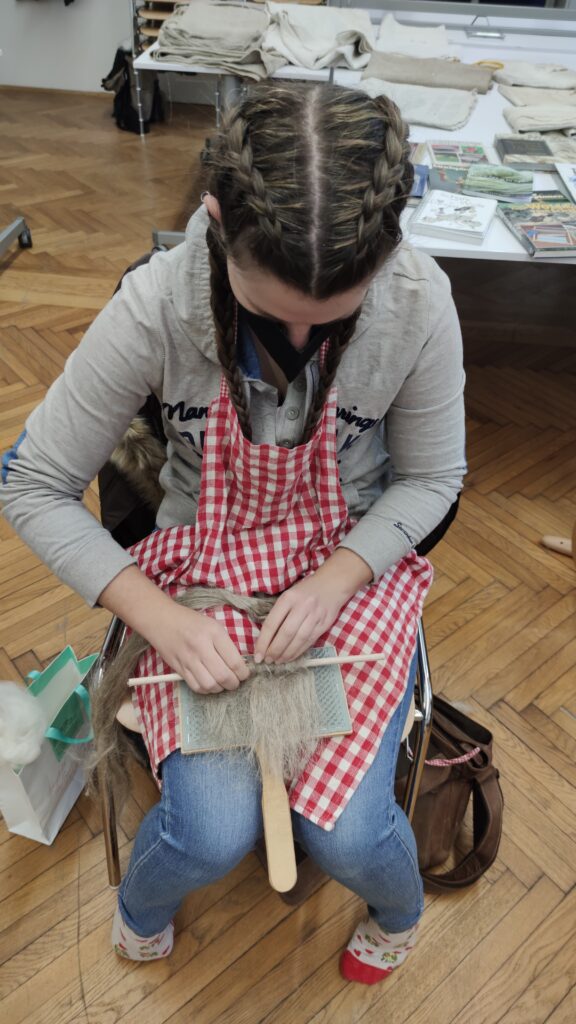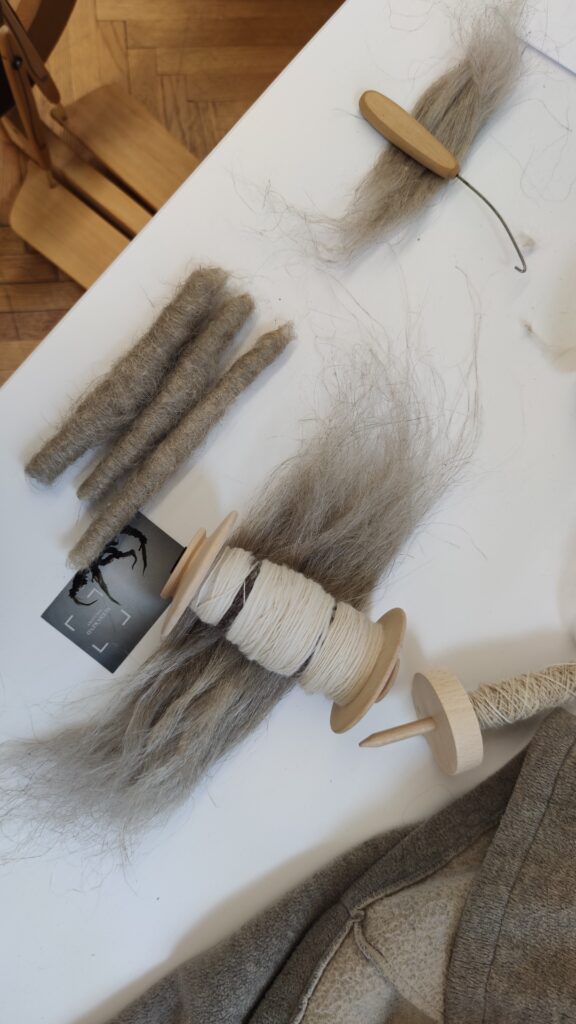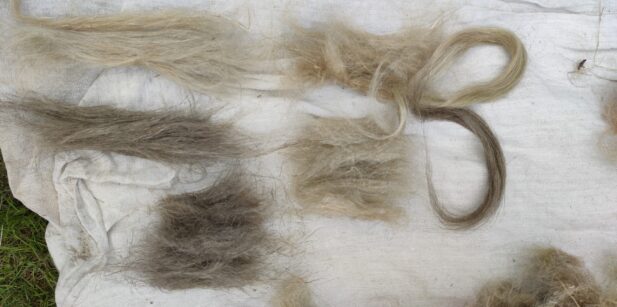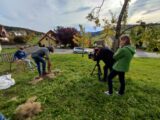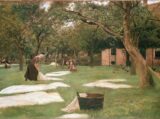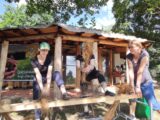Tow refers to the shortest fibres of a flax strick, usually mixed with lots of shives and dust. There are traditionally many different ways of spinning the tow, I find the rolag type super practical because it doesn't require any special equipment and is familiar to most hand spinners from wool.
Anyone who spins natural wool knows the problem of vegetal matter in the fleece. Whoever is bothered by the small particles in the wool should be very strong now, because traditionally nothing was sorted out of the tow. It was spun with straw, dust and sometimes veritable pieces of wood. After all, it was the most important basic material for all the tarpaulins and ropes on the farm. The processing had to be fast and deliver many, many metres of coarse canvas..
Depending on how precisely you pulled longer fibres out of the hand carde during preparation, the rolls can be more compact or looser. Many long fibres hold the roll together well. If this is the case, I carefully pull the ends to loosen the fibres. Then the tow is ready to spin. As already mentioned, tow was never spun for "beauty", not even for fineness. The aim was to produce good weft threads for coarse fabrics, which is why it was traditionally not dampened during spinning, as is the case with long flax. If you only have tow available and still want to have beautiful yarn, you should definitely spin it wet. This way the fibres stick together
I feel that tow needs a bit more twist than animal fibres of comparable length. Flax absorbs an enormous amount of energy. In addition, tow is often plied afterwards, which is another reason why a little more twist is not bad. Now prepare a bowl with water or a damp sponge and place it within easy reach of your spinning wheel. Moisture should always run WITH the twist into the thread. If the yarn is already spun, moistening it won't do much good; if the unspun fibre supply is moistened, it can no longer be pulled out. Therefore, wet the fingers of the spinning hand, move along the emerging yarn with the twist. This way the moisture will get exactly where it belongs. Do not use water sparingly, the yarn may well be WET. It is only important that it never stays too long on the bobbin, but is reeled off to dry. If you like it clean, you can also pluck out shive particles from the tow during the spinning process. This is tedious, but it can make for a very beautiful tow yarn that will certainly find more uses than for coarse tarpaulins.
